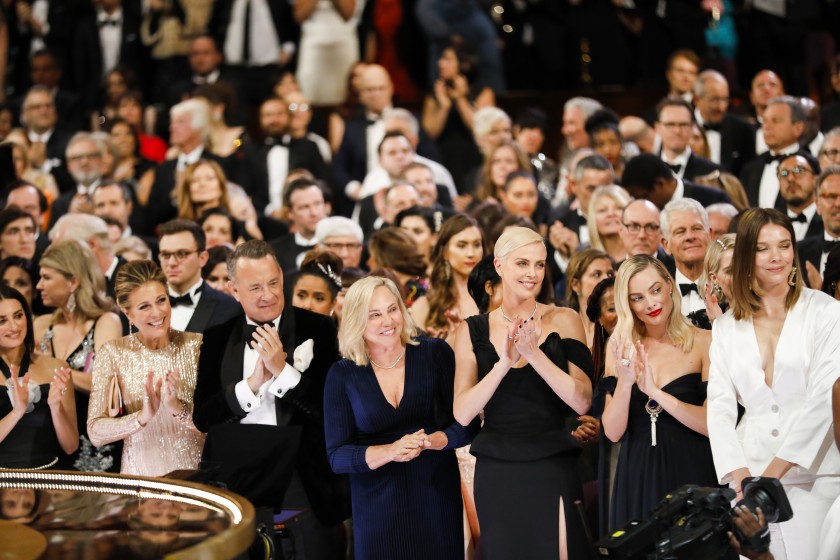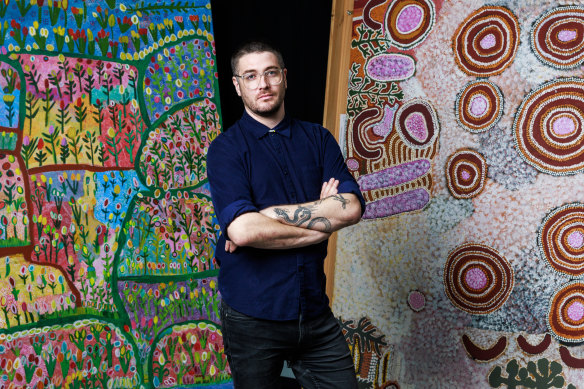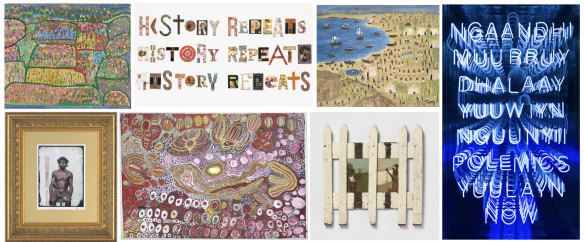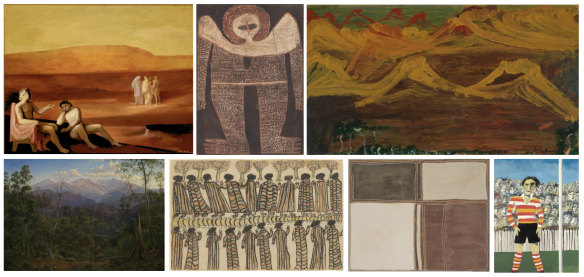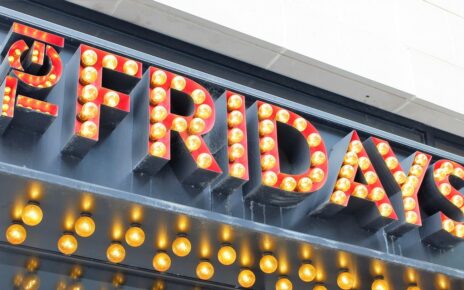Save articles for later
Add articles to your saved list and come back to them any time.
When the National Gallery of Victoria (NGV) needed to rehang its entire Federation Square gallery recently, curators decided the time had also come to give up some power. For too long, Indigenous art had been treated as just a fragment of Australian art, when in fact – they decided – the reverse is true.
Now, rather than beginning with our colonial past, visitors at NGV’s Federation Square will be greeted by Indigenous works.
Myles Russell-Cook, senior curator of Australian and First Nations art at the National Gallery of Victoria.Credit: Aaron Francis
According to Myles Russell-Cook, senior curator of Australian and First Nations art at the NGV, international visitors often ask the same question: where can they see Aboriginal and Torres Strait Islander work?
“Indigenous art was seen as a chapter within Australian art when of course it’s the way other way around. What we think of as Australian art is a very small chapter in a 65,000-year history,” he says. “For me, this is about if you want to see big change, you have to make big change. If we end up on repeat we will end up reinforcing the same histories and the same stereotypes and the same misnomers.”
“Your first experience should be First Peoples, everything should be First Peoples first. Just the amalgamation [of departments] in itself has been really powerful because no matter how well-meaning curators have been in the past, you tend to work independently… And you end up with concurrent histories being told at the same time without that general sense of a single history.”
This conversation is happening all around the country and all around the world, he says. Given Melbourne Now took over the entire Ian Potter building and the whole gallery needed to be rehung, it was ideal timing to make the change.
The galleries at NGV Australia are designed to tell a complete history of Australian art.Credit: NGV
One of the most significant elements of the change is the new, permanent exhibition on the ground floor, called Wurrdha Marra, which means ‘many mobs’ in the Wurundjeri Woi Wurrung language. It includes work by artists from around the country, from Victoria to the Tiwi Islands, Central Desert to Northeast Arnhem Land.
While Russell-Cook says you can never capture the full diversity of Aboriginal art in Australia, the show reflects a breadth and a diversity of communities, of time, key moments, key artists and also key stories and typologies. Works from different communities that reflect ongoing cultural practices and ideas will sit in dialogue with other works exploring similar things, contemporary works alongside ancient, or from one side of the country against works from the geographical opposite.
There are sections devoted to design, weaving, works that look at colour, materiality and form, systems of knowledge transfer and painting. It aims to redefine what Indigenous art is and to break down stereotypes about what fits within it, by including mediums ancient and new, ranging from ochres and neon, to sound and performance art.
The National Gallery of Victoria’s Federation Square site is merging its Indigenous and Australian art departments and reconfiguring its entire local art collection.Credit: NGV
Artists featured include Tony Albert, Treahna Hamm, Kent Morris, Marlene Gilson, Rover Thomas, Christian Thompson, Gary Lee, Nicole Monks, Gali Yalkarriwuy, Dhambit Mununggurr, Nonggirrnga Marawili and more.
On level two, the rehang melds the NGV’s First Nations and Australian collections for the first time, tracing Australian art history from its beginning 65,000 years ago through to the present day. Level three will become the home of temporary, solo or thematic shows.
This is the first year the NGV has had a First Nations art and design strategic council to advise on programming and future vision, made up of senior Indigenous artists, designers and creatives.
“A big part of it is about giving up power. If you want to do things in a way that are genuinely meaningful for Aboriginal people and by Aboriginal people, then that means giving up some power,” Russell-Cook says.
“In the past there’s been resistance to giving up power at institutions because it’s like bringing in more voices. People get anxious they are going to lose power, but the reality is the more voices you bring in, the more ideas you have.”
It’s a much more intuitive way of curating art, he says, and a rejection of the straight chronological approach that has traditionally dominated – much like the European-centric perspective.
Wurrdha Marra opens at NGV Ian Potter on October 13.
Find out the next TV, streaming series and movies to add to your must-sees. Get The Watchlist delivered every Thursday.
Most Viewed in Culture
From our partners
Source: Read Full Article
